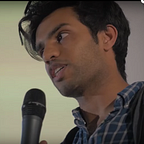And then everything changed.
No-one can say this is a small initiative anymore. An incredible amount has happened in 18 months.
It started from humble beginnings in 2015, when imin founded what is now OpenActive, with a goal to unite the sector under a simple idea: open opportunity data is a critical part of the strategy for getting more people more physically active, and to get there we need to work together, not in silos.
It meant that for imin (as an early stage startup with a goal to use technology to help people to be more physically active) we were going to attempt to level the playing field for everyone. Not normally what a startup does — we’re taught to find our unique advantage over other companies so venture capitalists have a reason to give us lots of funding.
Our realisation was that, too often in our sector, companies try to create their unique advantage based on what opportunity data they’ve been able to negotiate access to. This is bad for the sector, because it leads to a binary outcome — it either ends with one big winner, or lots of losers. Increasing levels of physical activity is too important to put all the eggs in one basket, and too hard a problem to have one outright winner.
Instead, we wanted imin’s advantage to be our open data approach, the network that this helps us to build, and the inherent value and usefulness of the technology we create. We want organisations to work with us because of the value our product can deliver for them; not because they feel they don’t have any other choice.
Fast forward to 2017, and after some hard graft to get the initiative up and running, OpenActive is now coordinated by the Open Data Institute (ODI), and funded by Sport England. The project has some serious steam behind it, building on imin’s earlier work. We’re seeing lots of great organisations open opportunity data, and exciting examples of open data in use, such as the imin-powered Get Active London activity finder, created by the visionary folks at London Sport.
And only a few weeks ago, I very proudly witnessed OpenActive reaching incredible new heights. The joint ODI and imin team were in GLL HQ in Woolwich sorting through the final details, and later that same day, it was done.
GLL, the UK’s largest leisure operator and possibly the largest source of opportunity data in the UK, had opened opportunity data from across its 250+ sites.
This is exciting for a number of reasons. Yes, the size of the data set is enormous; yes, it’s a national operator; and yes, it sets a precedent to the rest of the sector as the example to follow.
But more importantly, it was their reason for doing the work which is exciting. They are not doing it because they have to. They are doing because they see the value. They are embracing it. In GLL’s own words:
“The potential for data sharing in the leisure industry — as in the travel industry — is transformative…This additional resource will take us to the next level, allowing us to reach more customers and in doing so, help communities get more active, more often.”
We’re at the tipping point
GLL now join the ranks of other pioneering leisure operators, such as activeNewham and Fusion Lifestyle, in leading the way with open opportunity data. Not because anyone is making them. But because they see the inherent benefits of doing so. This distinction is important.
There’s lots of hard work still to do. We still want to make sure all data sets are complete with things like prices and live availability; we want to make sure facility data is included in the very near future; we want to make sure the data is high enough quality to encourage someone to participate; and above all we want to make the activities bookable from any website or app. All these things are on the radar for imin, and the wider OpenActive community, and in time they will come.
But let’s not ignore what this means: The sector has changed. Look how much open data there is now across England— here’s a snapshot from last week, even before the GLL data was opened (each dot represents a distinct activity session):
By achieving a level of national coverage, we’re approaching a tipping point. We can now start to engage national brands to start using the data in novel ways for their consumers. And by doing that, we’ll provide incentive for even more organisations to open up opportunity data, meaning more national coverage, and so on. It starts to fuel its own growth.
What’s next?
We need to continue working with a range of providers across the sector to encourage and facilitate the opening of more and more opportunity data. With examples to point at like GLL and Fusion Lifestyle, the case has never been stronger. With Sport England behind this, the Open Data Institute orchestrating it, and organisations like imin helping to power it, we’ll get there.
For imin, our next goal is very clear: work hard alongside every open data provider to make their activities bookable from anywhere online. We stay true to our vision: minimise the friction between someone thinking about being active, and enabling them to book and commit to something from whichever website or app they’re engaged with.
We believe reducing user effort for searching and booking will get more people more active, and we’re working as fast as we can to get there.
Watch this space.
